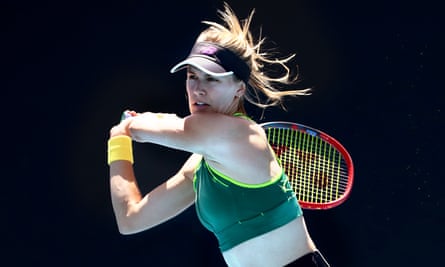A long time ago, I took a part-time job in a high-street clothing store. It was late November, and amid the chaos of the Christmas rush I quickly discovered that nobody had the faintest idea what I was meant to be doing or whether I was actually doing it. One morning I overslept and queasily awaited the shrill phone call from a supervisor. It never came. The day passed.
More days passed. Days turned into weeks. The payslips continued to hit the doormat. If there was any faint paroxysm of guilt or shame at taking this multinational giant for £5.15 an hour while watching movies and eating toast in my pyjamas, then let’s say it passed. In early February, the cheques finally stopped. No words were ever exchanged between us. I haven’t set foot in the shop for almost 20 years.
It was with a faint nod of recognition, then, that I greeted the news that with the Australian Open just days away Naomi Osaka was nowhere to be found. Not in the sinister Peng Shuai sense, although there was a similar tone of alarm to much of the accompanying coverage. “Australian Open officials scrambling to find two-time champion,” read one headline. “Concerns mount for Naomi Osaka,” this newspaper reported after it was finally confirmed that she would not be contesting the tournament she won in 2019 and 2021.
But of course, Osaka had not really disappeared. Last week she posted photos on Instagram of a recent holiday to Paris with her boyfriend, the rapper Cordae. They visited the Louvre and saw the Mona Lisa. (“New RENAISSANCE OIL PAINTING lead in frantic tennis star search”.) On Wednesday she was tagged in a picture at a Pilates studio in Los Angeles. (“Fears grow over two-time champ’s FRIGHTENING core strength”.)
Osaka has not played competitive tennis since September. And, of course, there is at least as much that we don’t know here as there is that we do. We don’t know what shape she’s in physically or emotionally. We don’t know how much time she’s spent on the practice court. We don’t really know what she wants, and we don’t even know if she does. As ever, compassion and empathy are the handiest of utensils.

But game recognise game. I think I have an inkling of what may be going on here. And if you’re one of those squalid media chatterboxes who gets his kicks from tearing down a 25-year-old woman with a history of mental health issues, who laid into her when she decided to skip a few press conferences a couple of years back, who sees the world in vivid shades of black, white and puce, then you’re not going to like it. For Osaka’s hiatus bears all the hallmarks of “quiet quitting”.
Quiet quitting started to gain traction as a term last summer, but in reality the concept has been around for generations. It is not so much a schism or a resignation as a kind of mental detachment from one’s work, a refusal to let it define you. You do not storm into your boss’s office and cause a scene. You simply sit quietly, fulfil any routine contractual obligations, and spend the rest of your time enjoying your newly liberated headspace.
Because – whether or not she decided to turn up in Melbourne – Osaka is still going to get paid. In the post-Serena era, she is probably the most famous and bankable star in women’s tennis. She has a new children’s book out, a galaxy of endorsements, a huge following and platform. Last year, according to Forbes, she turned over £42m, of which just £900,000 was earned on a court. At which point it is worth asking a sharp question: does any of this require an actual tennis career?
In a way, Osaka’s ambivalence – her refusal to label her status, to apologise or explain herself – is simply the logical conclusion of a wider trend. Serena Williams was content to pick and choose her adventures during the latter stages of a career that even now is neither finished nor unfinished. The former Wimbledon finalist Eugenie Bouchard has been bobbing around the edges of the sport for three or four years. Elina Svitolina and Angelique Kerber both took a break to start a family.
And for every Ash Barty and Jo Konta who retired in their peak years, there are several other players whose commitment to the game feels conditional: still there, still competing, but without the murderous, masochistic quality that might drive them to the top or drive them over the edge. What links them all is rejection: a rejection of the 12-month grind and churn of the tour, its carousel of interchangeable room-service meals and late-night doom scrolling, the restless fidgety sensation that afflicts the never-rooted, the sort of horrific online abuse that young female players attract more than anyone else. A rejection of the idea that they owe us anything beyond their own wellbeing.
The final point to make is that women’s tennis will be fine. There will always be new content to create and new stars willing to create it. Ons Jabeur and Coco Gauff and Iga Swiatek are the present, and afterwards doubtless there will be someone else. Meanwhile all we can really do is wish Osaka well; perhaps even admire her small, quiet act of rebellion. You can’t smash the system, so make it work for you. The days pass. The cheques continue to hit the doormat. And the toast you have just prepared at 1pm in your pyjamas tastes suspiciously like freedom.




